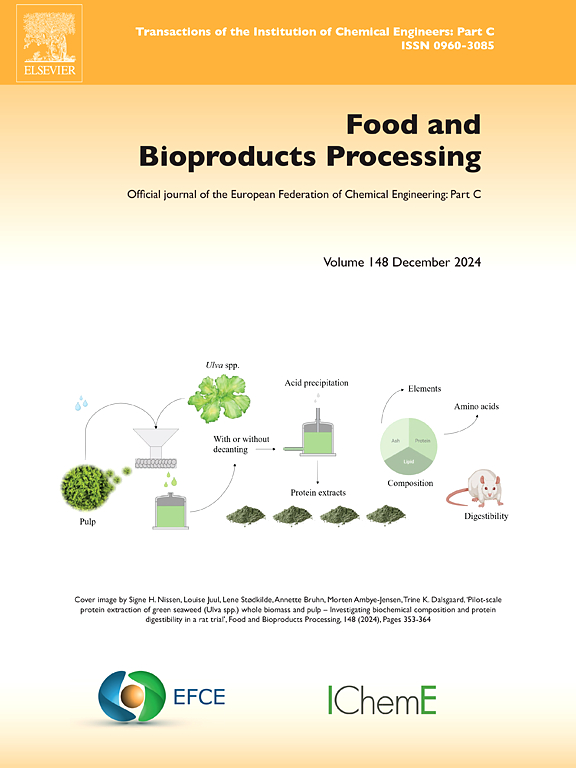微波DIC反应器比吸收热速率分布的优化
IF 3.4
2区 农林科学
Q2 BIOTECHNOLOGY & APPLIED MICROBIOLOGY
引用次数: 0
摘要
在中试规模的DIC (dsamtente instantan本文章由计算机程序翻译,如有差异,请以英文原文为准。
Optimisation of specific absorption heat rate distribution in microwave DIC reactor
The distribution of specific absorption heat rate (SAHR) was evaluated across seven configurations of a microwave cavity in a pilot-scale DIC (Détente Instantanée Contrôlée) reactor. The configurations featured two waveguide apertures, one vertical with two wings and the other horizontal with one wing. SAHR values were calculated from temperature evolution in 2 % Agar gel samples heated by microwave radiation at 2450 MHz. The temperature was measured using eight fibre-optic sensors embedded in a Teflon cross, placed successively at eight different heights along a 306 mm-long glass tube. The experiments demonstrated that SAHR homogeneity is strongly influenced by cavity configuration, with the right vertical aperture and back-wing (R_B) configuration achieving the most uniform axial and radial distributions. Furthermore, SAHR profiles at 500 W and 1500 W exhibited consistency, displaying the scalability of the optimal configuration for diverse power levels. These findings offer valuable insights for optimizing microwave cavity designs to enhance heating uniformity and efficiency in industrial applications.
求助全文
通过发布文献求助,成功后即可免费获取论文全文。
去求助
来源期刊

Food and Bioproducts Processing
工程技术-工程:化工
CiteScore
9.70
自引率
4.30%
发文量
115
审稿时长
24 days
期刊介绍:
Official Journal of the European Federation of Chemical Engineering:
Part C
FBP aims to be the principal international journal for publication of high quality, original papers in the branches of engineering and science dedicated to the safe processing of biological products. It is the only journal to exploit the synergy between biotechnology, bioprocessing and food engineering.
Papers showing how research results can be used in engineering design, and accounts of experimental or theoretical research work bringing new perspectives to established principles, highlighting unsolved problems or indicating directions for future research, are particularly welcome. Contributions that deal with new developments in equipment or processes and that can be given quantitative expression are encouraged. The journal is especially interested in papers that extend the boundaries of food and bioproducts processing.
The journal has a strong emphasis on the interface between engineering and food or bioproducts. Papers that are not likely to be published are those:
• Primarily concerned with food formulation
• That use experimental design techniques to obtain response surfaces but gain little insight from them
• That are empirical and ignore established mechanistic models, e.g., empirical drying curves
• That are primarily concerned about sensory evaluation and colour
• Concern the extraction, encapsulation and/or antioxidant activity of a specific biological material without providing insight that could be applied to a similar but different material,
• Containing only chemical analyses of biological materials.
 求助内容:
求助内容: 应助结果提醒方式:
应助结果提醒方式:


